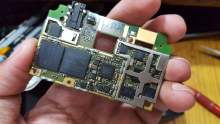Across the world we are accumulating electronic waste (e-waste) at an alarming rate. The UN reports that over 62 million tonnes of e-waste is produced every year. This figure is expected to rise by 32%, to 82 million tonnes, by 2030.
But, the UN also report that only around 25% of e-waste is properly collected and recycled.
Much of the rest ends up in landfills or in informal ‘recycling’ operations in developing countries, where the toxic chemicals used in production are released into the surroundings causing untold damage to human health and the environment.
Techno waste life cycle
When we talk about the ‘life’ of an electronic device or gadget we tend to refer to the period of usefulness, the time when it’s in our hands, or on our desks, serving its purpose. The reality is that this is a brief period in the long journey taken by any device, a journey which often begins and ends with the exploitation of the world’s poorest.
An average smartphone, for example, may contain over 60 different types of metals, mined in various corners of the world, as well as plastics and ceramics.
This array of materials means that properly disposing of devices is complicated and fraught with issues. As a global society, we are currently accumulating electronic waste or e-waste at a rate of over 57 million tonnes every year.
About a quarter of this is IT equipment and screens (including televisions), and there are estimated to be over 100 million additional used devices stored in the attics and drawers of homes across the world.
Of this so-called ‘tsunami of waste’, around 20% is officially reported as properly collected and recycled. Much of the rest ends up in landfills or in informal ‘recycling’ operations in developing countries, where the toxic chemicals used in production are released into the surroundings causing untold damage to human health and the environment.
Meanwhile, valuable minerals and complex components, extracted at such huge cost to the natural environment and human welfare, are wasted after only a short period of use.






